Mammals
Media
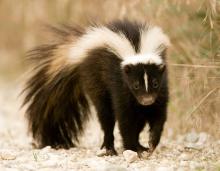
Species Types
Scientific Name
Mephitis mephitis
Description
Skunks are omnivorous mammals notorious for their ability to discharge an obnoxious scent when provoked. The striped skunk is the most commonly encountered skunk in our state.
Media

Species Types
Scientific Name
Canis lupus
Description
The gray wolf originally ranged throughout Missouri, but with settlement the species was gradually exterminated. While there is no evidence of a breeding population in the state, wolves are listed as a protected species in Missouri, and they occasionally wander into Missouri from northern states.
Media
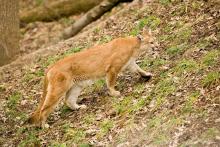
Species Types
Scientific Name
Puma concolor
Description
Mountain lions hadn't been seen in Missouri since 1927 — but in 1994, conclusive physical evidence proved they are reappearing in our state. These animals probably are individuals dispersing from other states, and no breeding population seems to have been reestablished.
Media
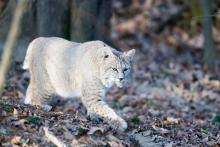
Species Types
Scientific Name
Lynx rufus
Description
The bobcat is a short-tailed wild cat with a distinctive streaked and spotted pattern, a wide face, and pointy ears often with black tufts.
Media

Species Types
Scientific Name
Mustela frenata
Description
Long-tailed weasels are small but voracious predators. They are rare in our state but are most common in the south-central and southwestern portions. In summer, they are brown with yellow beneath. In winter their fur is paler or white. The tail has a black tip.
Media

Species Types
Scientific Name
Mustela nivalis
Description
This mouse-sized weasel is found only in Missouri’s northern counties, and abundance varies locally and seasonally, depending on fluctuating rodent numbers — their favorite food.
Media

Species Types
Scientific Name
Ictidomys tridecemlineatus
Description
The thirteen-lined ground squirrel has 13 alternating brown and whitish lines (some may be broken into spots) along its back and sides, creating rows of whitish spots within dark lines. It stands upright to survey its surroundings and dives into its burrow when it senses danger.
Media
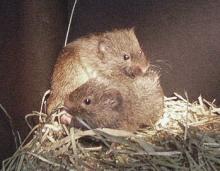
Species Types
Scientific Name
Microtus ochrogaster, M. pinetorum, and M. pennsylvanicus
Description
There are three species of voles in Missouri: prairie, meadow, and woodland voles. These mouselike rodents have rounded, blunt snouts, chisel-shaped front teeth, and short tails.
Media
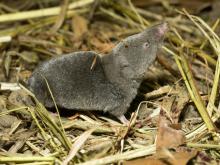
Species Types
Scientific Name
Sorex, Blarina, and Cryptotis spp.
Description
Six species of shrews occur in Missouri. They are mouselike but do not have the chisel-like front teeth of rodents. Instead, they have sharp, spiky teeth for hunting prey.
Media

Species Types
Scientific Name
Odocoileus virginianus
Description
In summer, white-tailed deer are reddish-brown to tan above; in winter, they are grayish. The throat and belly are white. This common Missouri deer is named for the bright white of its flaglike tail.
See Also
About Mammals in Missouri
More than 70 species of wild mammals live in Missouri: opossums; shrews and moles; bats; rabbits; woodchuck, squirrels, beaver, mice, voles, and other rodents; coyote, foxes, bear, raccoon, weasels, otter, mink, skunks, bobcat, and other carnivores; deer and elk; and more. Most of us recognize mammals easily — they have fur, are warm-blooded, nurse their young, and breathe air.





















